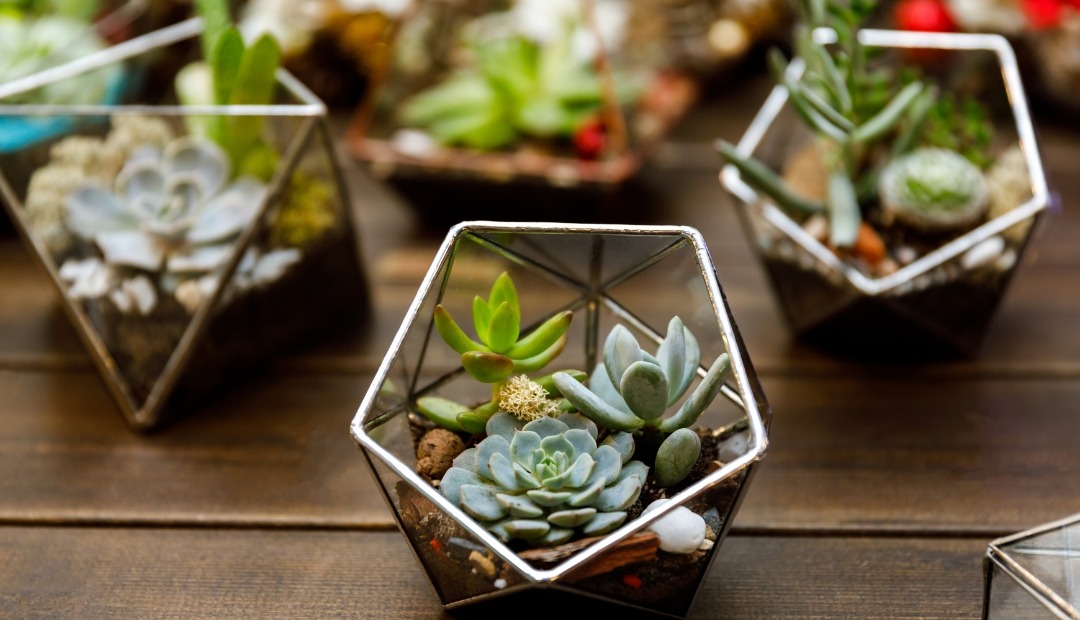Fantasyland meets a microcosm of nature–that’s what terrariums are all about. These glass containers come with small plants and miniatures, giving them the appearance of tiny greenhouses.
If you’ve seen a terrarium or two on social media, you have to admit: it’s a pretty cool idea. Apart from serving as a stress-relieving hobby and a low-maintenance garden, it can add a beautifully unrefined feature to your apartment.
Building a terrarium is like having your very own ecosystem in your apartment. And in order to thrive, it relies on your care to a certain degree.
Read to give this interesting hobby a try? Here are the steps for making your own mini-ecosystem.
Pick Your Container
Have spare glass jars or fishbowls lying around in your apartment? You can turn just about any transparent glass container, with a wide opening and without drainage holes, into a terrarium.
While you can find special terrarium containers in gardening stores, they can cost you hundreds of bucks. And while you can use glass bottles, their narrow openings will make your terrarium a bit tricky to build and maintain.
Select Your Plants
Choosing which plants to use is an important step in selecting your substrate and the overall theme of your terrarium.
If you’re on a budget, you can go outside and look for mosses and humidity-loving plants in your area.
You can also purchase terrarium plants from the nursery. Some of the most common kinds on the market are air plants, cacti, and other rooted plants.
- Air plants - Tillandsia and other air plants are some of the easiest plants to grow in terrariums. Their leaves double as roots, absorbing water from the air and making them perfect for humid environments.
- Cacti and succulents - While too much moisture is a death sentence for most cacti and succulents, you can grow these plants in certain terrarium conditions. If you do choose them as terrarium plants, you have to place them in a shallow bowl or any wide open container.
- Other rooted plants - Compared to cacti and succulents, other rooted plants that can handle humidity and a lack of drainage are easier to care for. Some of the most common choices of rooted plants are ferns, peperomia, and carnivorous plants.
Add a Drainage Layer and Soil Barrier
Because terrariums do not have drainage holes, you’ll have to provide your plants with a drainage system. That way, you can keep excess water from your plants’ roots and protect them from rotting.
To create a drainage layer, you need to prepare three parts gravel and one part activated charcoal. Spray some water on them, and add the gravel layer first to the glass container. Then, place the damp activated carbon on top of the gravel.
After putting gravel and charcoal in your container, you have to place a soil barrier. This should allow water to flow through while preventing your chosen substrate from falling into your drainage layer. You can use any non-compostable material, such as plastic mesh, as your soil barrier.
Place Your Substrate
Your substrate or growing medium should mimic the natural environment of your chosen plants.
If you plan to grow air plants in your terrarium, you need to put them on a piece of driftwood or anything that can serve as an anchor for their roots.
If you’re growing cacti, you might want to get a special cactus mix, which can be composed of volcanic rocks, clay pebbles, perlite, or/and sand.
For humidity-loving rooted plants, a growing medium of sand, potting soil, peat moss, and perlite is a perfect choice.
Introduce Your Plants to Their New Glass Home
After placing your substrate, it’s time to create your eco universe.
Put a layer of moss over the soil to add a more natural touch to your terrarium and prevent too much splashing during watering. Then, use cotton swabs to clean inside your glass container.
Finally, add your larger plants first and the smaller ones afterward, then decorate it with rocks and miniatures. Place your terrarium under indirect sunlight and you are set to watch your creation thrive.
Making your own terrarium can be a fun and rewarding project that allows you to bring a little bit of nature indoors. Selecting the right plants and materials and following the proper care instructions will help ensure that your miniature garden thrives. So, gather your supplies, let your creativity flow, and enjoy watching your little ecosystem grow and flourish.
Brookside Commons Apartments in Kansas City, MO


